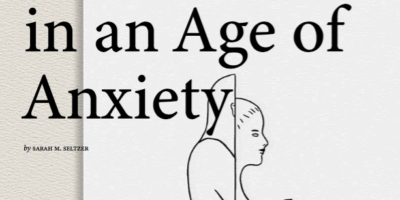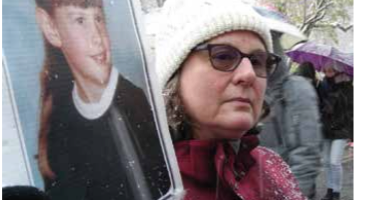Left to Pick Up the Pieces After a Suicide
This week, one cherub-faced, auburn-eyed child of seven asks me, “Why doesn’t anyone talk to me about my dad?” Precocious and pained, this little girl became a suicide survivor last year when her father ended his life.
She is just beginning to unravel the details of what happened to him. At the same time, she has had to absorb the collateral damage from the loss of family and friends that often accompanies news of a suicide. She is discovering too young that people turn away from suicide and suicide survivors. As a grief specialist, I know vividly this story of social isolation—and the little girl’s longing to be heard and held.
In summer 2018, our world lost two beloved celebrities to suicide, Kate Spade and Anthony Bourdain. Following the shock of this news came important information on how to help the suicidal and how to prevent the contagion effect of suicide. But in our effort to thwart the reality of suicide in our culture, overlooked is a very simple idea that each of us can carry out: talk to suicide survivors.
Suicide survivors are the forgotten family and close friends of those who ended their own lives. They are the ones left to live with the broken pieces their loved one has left behind, trying to fathom the incomprehensible. These are the people most at risk for the dangerous effects of contagion, as their exposure to suicide is the closest. In the past, suicide was, and sometimes still is, viewed as shameful, something that must be hidden. This secretive shame is carried forward by loved ones.
In the last two decades, suicide rates have risen 25% nationwide, according to the United States Centers for Disease Control and Prevention. Previous studies have found evidence of increased rejection, shame, negative judgments, and loss of social support in people bereaved by suicide when compared to those bereaved from other types of loss.
Evidence that suicide can run in families has been found in both case reports and epidemiological studies. This means that suicide is most contagious within families and circles of close friends. With the suicide rate increasing and the silent spreading of risk in suicide survivors, we are overlooking a significantly large group of vulnerable parents, siblings, friends, and children.
Survivors are left to hold their shame, sometimes to the point of hiding that a suicide happened in their family, bearing the secret through multiple generations of lies and distortions. These loved ones may feel marked and branded, which may keep potential supporters from getting too close.
Yet there is something each of us can do today.
Speak with—and listen to—someone who has lost a loved one to suicide. Listen to them about their pain, or their shame, their guilt, their fear and dread. Suicide survivors need to feel recognized and understood for the burden they carry. ALEXIS TOMARKEN, the Lilith Blog.




